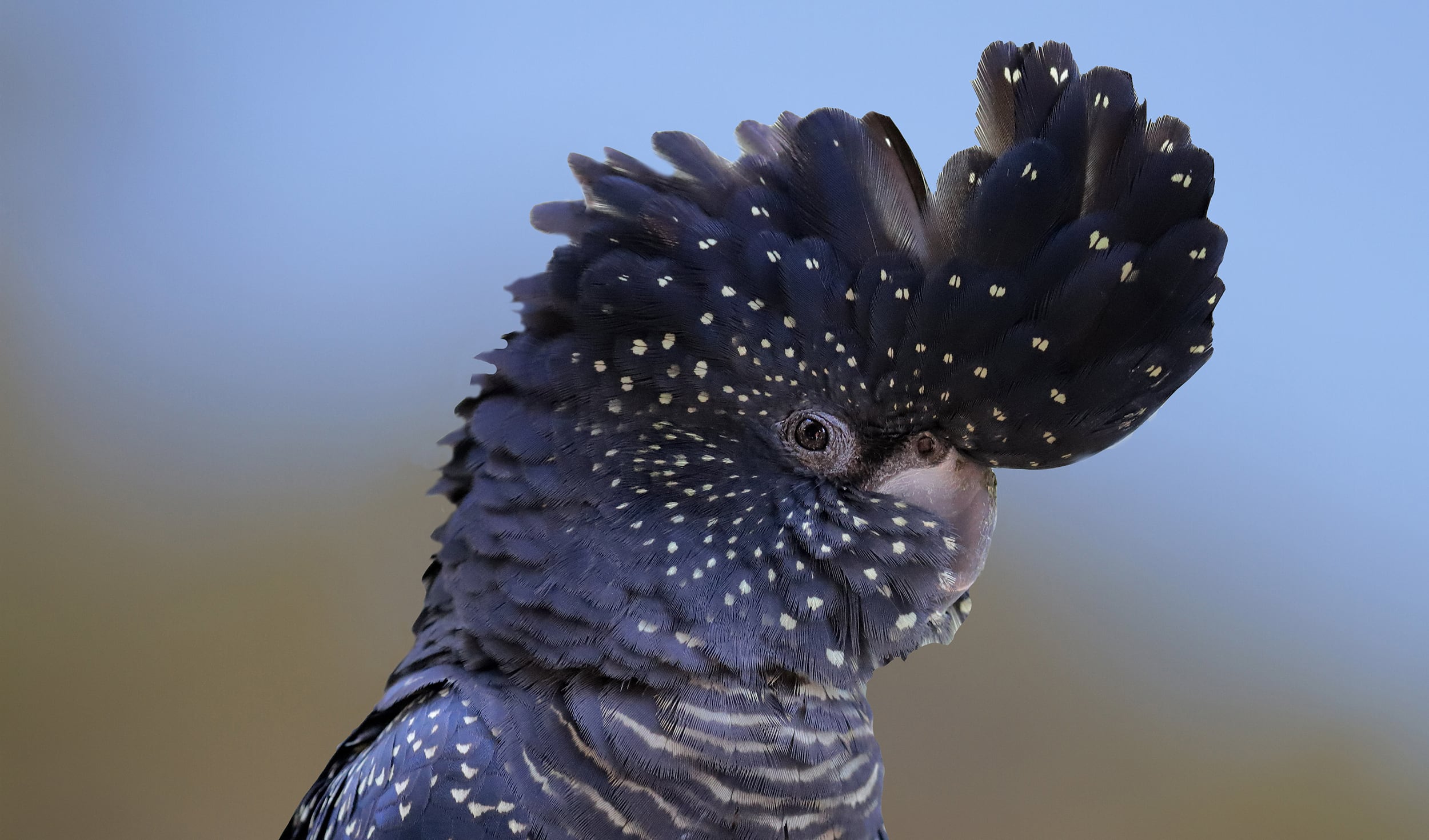
The binomial combination had already been used by Carl Linnaeus for the lesser vasa parrot in 1758, and by Johann Friedrich Gmelin for the palm cockatoo in 1788 it was thus invalid even though both other species were already known by different names at the time. In 1827, Jennings proposed the name Psittacus niger for the bird. The change was first made by Anselme Gaëtan Desmarest in 1826. The red-tailed black cockatoo is the type species of the genus Calyptorhynchus, the name of which is derived from the Greek calypto-/καλυπτο- "hidden" and rhynchus/ρυγχος "beak".

In 1994, an application to conserve Calyptorhynchus banksii as the scientific name was accepted by the ICZN. For several decades, Mathews' proposal was accepted by many authorities, although it was unclear whether the original Port Jackson reference had actually referred to the red-tailed black or, more likely, the glossy black cockatoo. For many years, the species was referred to as Calyptorhynchus magnificus, proposed by Gregory Mathews in 1927 as Shaw's name had predated Latham's 1790 description. Narrowly predating Latham, English naturalist George Shaw described Psittacus magnificus from a specimen collected somewhere in the Port Jackson (now Sydney) region. The red-tailed black cockatoo also has the distinction of being the first bird from Eastern Australia illustrated by a European, as a female, presumably collected at Endeavour River in north Queensland, was sketched by Banks' draughtsman Sydney Parkinson in 1770. The species complex was first described by the ornithologist John Latham in 1790 as Psittacus banksii, commemorating English botanist Sir Joseph Banks.

Of the black cockatoos, the red-tailed is the most adaptable to aviculture, although black cockatoos are much rarer and much more expensive in aviculture outside Australia. Populations in southeastern Australia are threatened by deforestation and other habitat alterations. They are seed eaters and cavity nesters, and as such depend on trees with fairly large diameters, generally Eucalyptus. In the more northerly parts of the country, these cockatoos are commonly seen in large flocks. The species is usually found in eucalyptus woodlands, or along water courses. Although the more northerly subspecies are widespread, the two southern subspecies, the forest red-tailed black cockatoo and the south-eastern red-tailed black cockatoo are under threat. Five subspecies are recognised, differing chiefly in beak size. It is more common in the drier parts of the continent.

Adult males have a characteristic pair of bright red panels on the tail that gives the species its name. The red-tailed black cockatoo ( Calyptorhynchus banksii) also known as Banksian- or Banks' black cockatoo, is a large black cockatoo native to Australia. Female, Northern Territory Male, Northern Territory


 0 kommentar(er)
0 kommentar(er)
